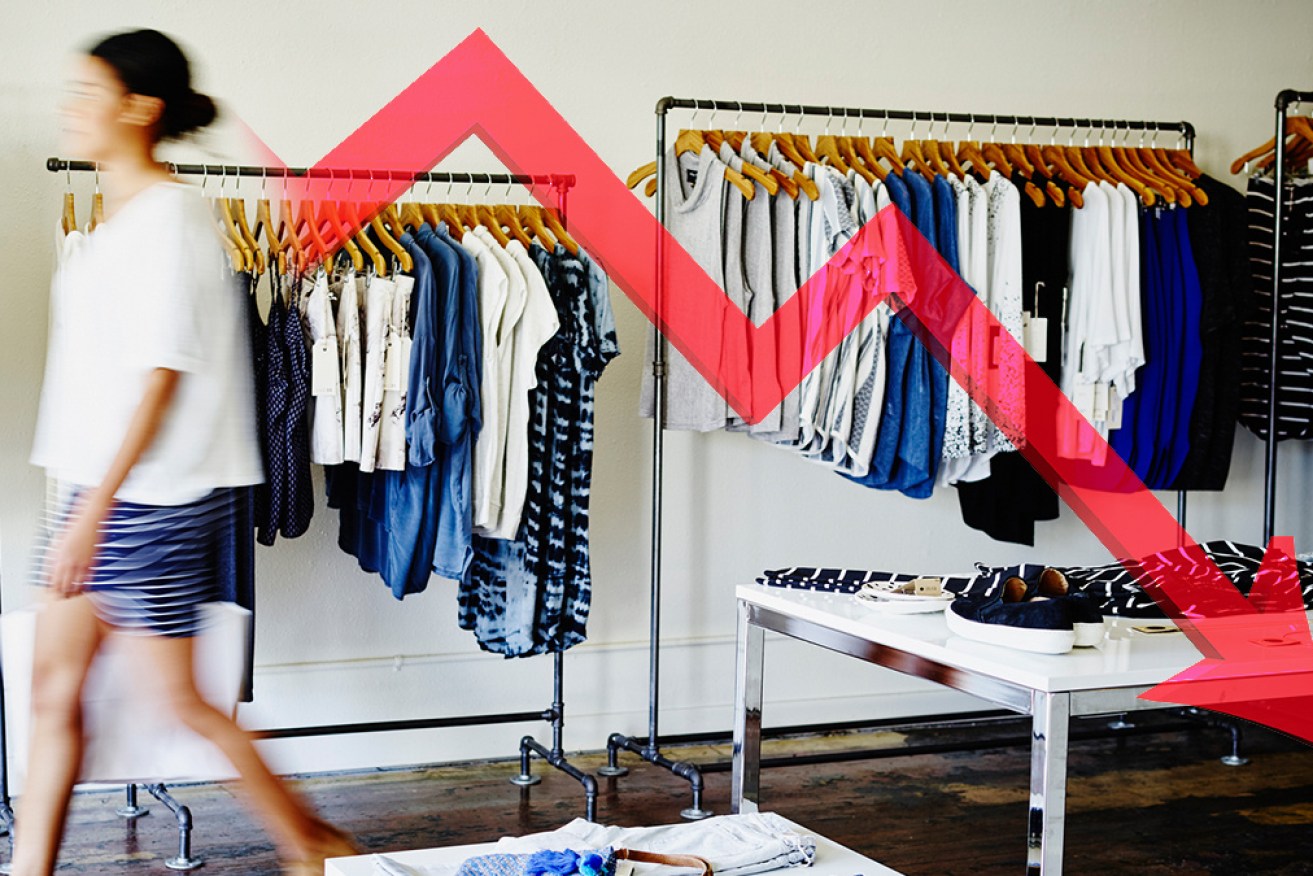Economist believes ‘the worst is behind us’ after record fall in retail sales


Retail sales fell off a cliff in April after a record rise in March. Photo: Getty/TND
Retail sales came crashing down in April after panic-buyers stopped hoarding tinned food, toilet paper and pasta.
More timely data, however, suggests “the worst is behind us”.
Preliminary ABS figures released on Wednesday shows retail turnover plunged 17.9 per cent in April as consumers with overflowing pantries and worsening finances cut back on spending.
Monthly sales fell to $24.73 billion – 9.4 per cent lower than the same time last year.
The monthly fall was the largest in history and came immediately after the largest ever monthly rise.
Having stocked up on products like toilet paper and pasta, and with home offices and gyms now set up, spending in those sectors fell away, while spending on clothing and footwear and at cafes, restaurants and takeaway continued to fall sharply,” EY chief economist Jo Masters said.
“Not surprisingly, the share of online sales continues to rise, with 10 per cent of turnover online in April.”
The previous record changes in retail sales were set almost 20 years ago.
Sales jumped 8.1 per cent in June 2000 as consumers rushed to buy goods before the introduction of GST on July 1, and then plunged 10.6 per cent the following month.
Sharp drop reflects end of panic buying
Although the ABS said spending fell across every industry in April, there were “particularly strong falls in food retailing, cafes, restaurants and takeaways, and clothing, footwear and personal accessories”.
“The food retailing industry, which saw a strong rise in March due to unprecedented demand, fell 17.1 per cent from March 2020,” the ABS said.
“Additional analysis indicates that the majority of products which rose substantially in March recorded falls in April 2020, however they remained at higher levels than April 2019.”
Meanwhile, turnover in clothing and footwear and cafes and restaurants is around half the level it was in April 2019.
And supermarket and grocery store scanner data shows that monthly turnover in April fell by:
- 23.7 per cent in ‘non-perishable goods’, such as flour, sugar, canned fruit, canned vegetables, canned and dry mix soups, confectionery and long-life milk products
- 15.3 per cent in ‘perishable goods’, such as fruit, vegetables, meat and dairy
- 24.5 per cent in ‘all other products’, which includes non-food items such as cleaning products, medicinal products, toiletries and toilet paper.
In March, turnover rose 39.0 per cent for non-perishable goods, 21.6 per cent for perishable goods, and 30.5 per cent for all other products – with canned and dry mixed soup, flour, and toilet and other paper products topping the list of most hoarded items.
Larger drop than expected
Economists had expected a large drop in sales in April, as they thought the large jump in turnover in March was caused by consumers bringing forward spending rather than increasing their long-term consumption.
But the 17.9 per cent drop was much larger than their average prediction of 5.0 per cent.
Over the short term, Ms Masters said spending was unlikely to increase by much “as consumers face high household debt, weak wage growth, elevated job insecurity and falling house prices”.
But more timely data suggests the economy is on the road to recovery.
New Commonwealth Bank figures released on Tuesday shows spending on credit and debt cards in the week to May 15 was down just 2 per cent year on year.
Although that’s well below pre-crisis levels, with spending in January up 7 per cent on the year before, it’s a noticeable improvement on the lows of mid-April.
Commonwealth Bank senior economist Kristina Clifton said consumers were opening their wallets as restrictions eased and government stimulus flowed into bank accounts.
- Michael Pascoe: The policies government must consider to rebuild employment
Tweet from @ANZ_Research
We’re in for a bumpy ride
Meanwhile, the ANZ-Roy Morgan consumer confidence index has risen for seven consecutive weeks, and ABS payroll data shows the pace of job shedding has slowed.
Indeed Asia-Pacific economist Callam Pickering said in a note yesterday that although the ABS data showed more than 900,000 jobs were lost between March 9 and May 2, the number of jobs appeared to stabilise towards the end of that period.
“The data reinforces this notion that the worst is behind us,” Mr Pickering said.
“With restrictions being lifted, a recovery can begin, provided we avoid a damaging second wave.”
But we’re in for a bumpy ride, he was quick to add.
The path to recovery won’t be straightforward and it won’t be quick. There will not be an immediate snap-back to pre-crisis conditions,” Mr Pickering warned.
“The economic damage caused by COVID-19 is considerable for households and businesses alike.
“The Reserve Bank of Australia, for example, expects that the unemployment rate will still be 7.5 per cent by the end of next year.”
He added: “That suggests that fiscal support (government support measures) will need to remain in place, perhaps longer than planned, to support job creation this year and beyond.”










